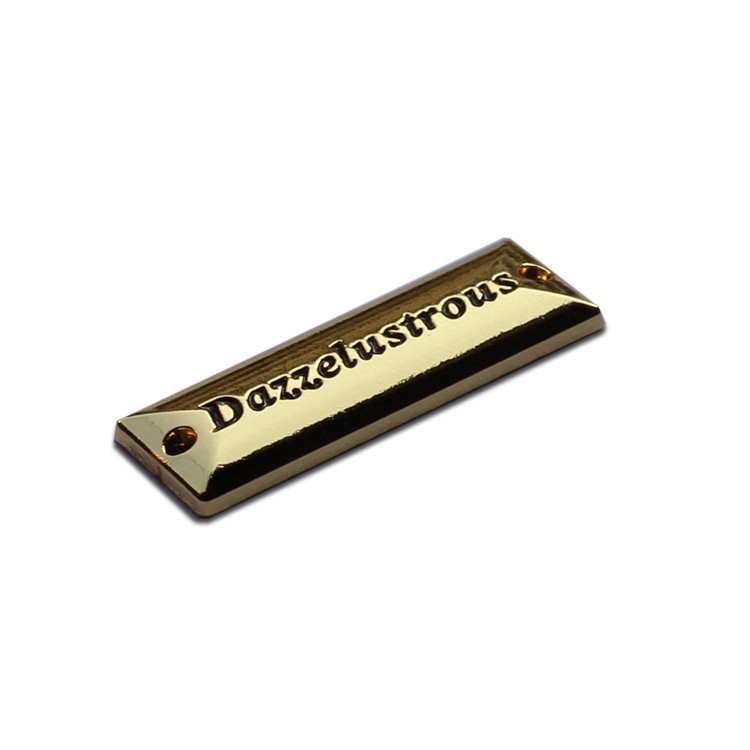Etched nameplate customization

Professional copper nameplate manufacturer
2019-07-24
Professional copper nameplate manufacturer
2019-07-31Etched nameplate customization

The material used to make the mechanical nameplate is mainly produced by stainless steel, because the processed nameplate has relatively good effect, durable, no rust, wear resistance and good gloss. In summary, the machine nameplate refers to the metal signboard installed on the instrument and equipment, including the mechanical nameplate that was purchased at the time of purchase and the mechanical nameplate installed by the factory. The mechanical nameplates that have been purchased at the time of purchase are generally marked with the name, model, performance, specifications, date of manufacture, factory number and manufacturer. The mechanical nameplate installed by our factory generally includes the equipment number and activation date specified by the factory. The mechanical nameplate of our factory is produced and installed by the machine repair group of the equipment department.
Insert your content here[/alert]About label, electroformed nickel sign, nameplate ultra-thin electroforming sign is a new type of embossed paste electroforming sign, also known as patch, split self-adhesive sign, electroformed patch, electroformed trademark, electric logo, three-dimensional convex OEM, platinum signs, gold signs, placards, graphic cards, etc. The technology originated in Japan, South Korea, and has just been introduced to China in recent years. This product is a new signage product in the sign industry in recent years, because the product is exquisite and gorgeous, visually strong, and it is a stick, a file and a substrate. Paste wood, acrylic, plastic, gift box, book, paper, crystal, mobile phone, electrical paint, household appliances, glass, car, motorcycle, glasses, telescope, machinery, instruments, etc., all soft and hard) It's effective to make your products more up-to-date and icing on the cake.
The quality of the protective layer that does not require etching is not guaranteed, and the surface of the etched portion cannot be sufficiently contacted with the etching solution due to the inhibition of the oxide film, affecting the speed of metal dissolution and the uniformity of the etched surface. If the metal etched surface has a thick rust or a thick oxide film, it is removed by acid etching or lye soaking. The rust removal by electrolysis is relatively thorough and can be selected according to the situation. In the case where the film layer or the rust layer is thin, weak etching or brief electrolytic etching may be considered. The smoothness of the surface-polished metal etched surface has a great influence on the etching. When the surface is rough, the part of the corrosion-resistant adhesive that does not need to be etched is difficult to remove. The surface to be etched is rough and the etched marks are rough. Therefore, before the etching, the metal surface should be polished. According to the situation and the requirements of the product, the polishing scheme and the selection method can be formulated. For details, refer to the polishing part in Chapter 2.
Insert your content here[/alert]About label, electroformed nickel sign, nameplate ultra-thin electroforming sign is a new type of embossed paste electroforming sign, also known as patch, split self-adhesive sign, electroformed patch, electroformed trademark, electric logo, three-dimensional convex OEM, platinum signs, gold signs, placards, graphic cards, etc. The technology originated in Japan, South Korea, and has just been introduced to China in recent years. This product is a new signage product in the sign industry in recent years, because the product is exquisite and gorgeous, visually strong, and it is a stick, a file and a substrate. Paste wood, acrylic, plastic, gift box, book, paper, crystal, mobile phone, electrical paint, household appliances, glass, car, motorcycle, glasses, telescope, machinery, instruments, etc., all soft and hard) It's effective to make your products more up-to-date and icing on the cake.
The quality of the protective layer that does not require etching is not guaranteed, and the surface of the etched portion cannot be sufficiently contacted with the etching solution due to the inhibition of the oxide film, affecting the speed of metal dissolution and the uniformity of the etched surface. If the metal etched surface has a thick rust or a thick oxide film, it is removed by acid etching or lye soaking. The rust removal by electrolysis is relatively thorough and can be selected according to the situation. In the case where the film layer or the rust layer is thin, weak etching or brief electrolytic etching may be considered. The smoothness of the surface-polished metal etched surface has a great influence on the etching. When the surface is rough, the part of the corrosion-resistant adhesive that does not need to be etched is difficult to remove. The surface to be etched is rough and the etched marks are rough. Therefore, before the etching, the metal surface should be polished. According to the situation and the requirements of the product, the polishing scheme and the selection method can be formulated. For details, refer to the polishing part in Chapter 2.




